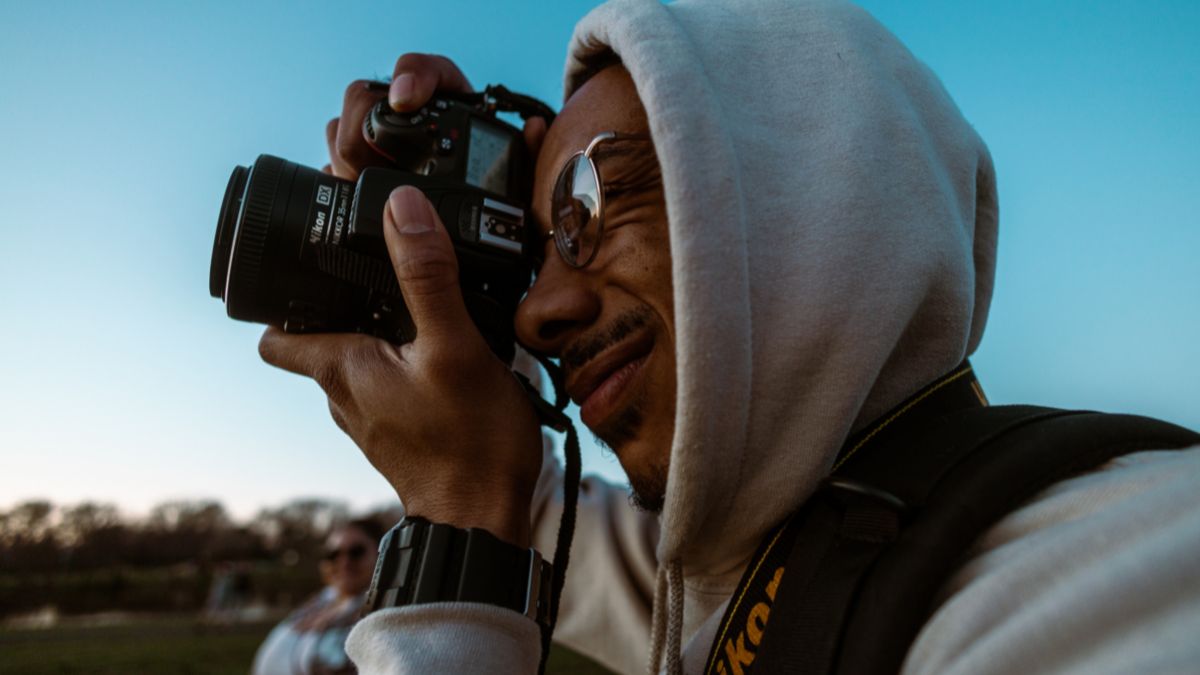So, you want to know How to Photograph Hummingbirds with a Flash, right? If that is the case, then we have some useful information for you in this blog post. To begin with, you do not have to be an expert when it comes to photographing this adorable bird species. That is why we decided to share tips and strategies from our experience to help you take the best shots with your very own camera.
There are undoubtedly a variety of techniques to photograph hummingbirds. However, in my opinion, to have great success, using the flash technique to snap birds that are feeding or flying is highly recommended. However, the conventional flash and natural light exposure should work well if you wish to take pics of birds in static locations.
Keep in mind that a fundamental knowledge of exposure is quite beneficial to get the best shots. This article will considerably increase your chances of getting fantastic hummingbird images if you are familiar with aperture, shutter speed, and ISO. You should also have a basic understanding of white balance, angle, view, and depth of focus to get the best photos.
How To Photograph Hummingbirds?
If you want to use the best strategies that involve how to photograph hummingbirds with a flash, then there are a few essential items that you will need. This is because these feathery creatures move through the air with speed. Additionally, to capture their fast-paced humming wing movements when they’re not in flight, specific camera details are needed.
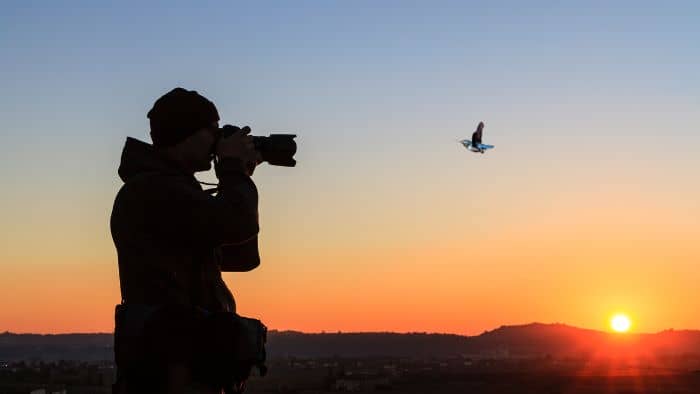
Take heed of the list below to get clearer pics:
1. To begin, you will need a camera with a fully manual mode function.
2. Although a 100mm lens that can focus from a short distance away will do, a 200mm or more will be much better.
3. You will also need an outside flash that comes in manual mode and a tripod.
4. The next important item is stands, which are meant to accommodate external flashes. 5. Triggers for remote flashes will also be required.
6. A wired or radio remote shutter release.
Although you can always add more equipment, the above list should get you started taking amazing hummingbird pictures. If you have a garden with feeders to attract them, then you wouldn’t have to go out trying to locate a region that they inhabit. Alternatively, you could display bird feeders in your yard to attract this dainty species.
Best Camera Settings For Hummingbirds
You can take hummingbird photography as far as your creativity will allow. The use of additional flashes, premium lenses, pricey backdrops, and high-end flash triggers can all help you get better images. However, there are also low-cost methods for capturing stunning images of hummingbirds that you could opt for.
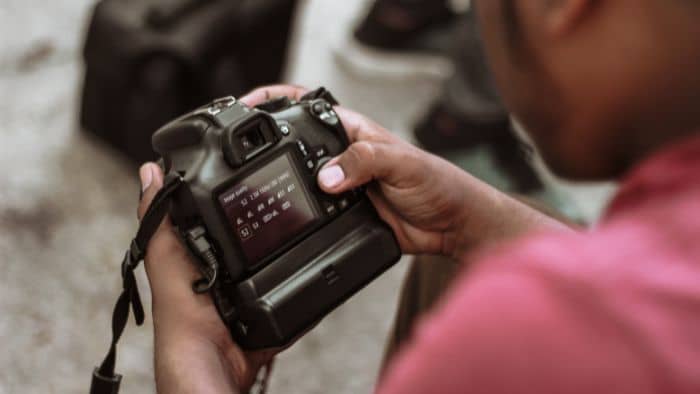
I have had great results using low-end products that have resulted in stunning photographs. No matter what one you decide to use, knowing how to photograph hummingbirds with a flash and the best camera setting would be advantageous.
Here Are A Few Suggestions That Should Garner You Great Results:
Field Depth and Aperture
Hummingbird photography typically involves shooting at close range with a telephoto lens. As a result, the depth of field will be extremely limited. With some lenses, the amount of space that is in focus at wide apertures may be restricted to less than 1/4 inch.
Lowering the aperture as much as you will avoid this and keep the picture crisp. You can start by using f/11 or f/16 but if the flash has enough strength, you might want to attempt an f/22 aperture. Remember to adjust it to get the best shot.
Camera Speed
Maintaining the shutter speed at or below the camera’s maximum flash sync speed is vital. Your flash speed will be 250 or lower depending on your camera but adjusting it to 1/125 to capture hummingbirds is great.
ISO
Use the lowest ISO setting available to reduce noise when taking your pictures. For this reason, I recommend ISO 200–400. This should be sufficient for maintaining good exposure and bearable noise levels.
Flash
A multiple-flash setup would be great to enhance hummingbird photography. Illuminating the birds, stopping the action, and lighting the background can all be accomplished with the use of several strobes, speed lights, and flashes. However, you do not need to employ pricey, top-of-the-line equipment.
This is because sticking with low-cost manual flash units will let you get excellent results without spending a fortune. If you’re fine with non-ETTL flash triggers, there are several affordable solutions available. However, combining high-end and low-cost units would be great.

How To Photograph Hummingbirds In Flight
Choosing a pleasing background is just as vital as the subject when photographing hummingbirds. Plants and flowers typically form an attractive setting that blends well with birds of any species. However, keep in mind that fences and shade trees offer colors that create excellent natural backdrops.
When photographing hummingbirds in flight, you must remember that creating a blurred background appearance may be difficult if you are working with narrow apertures and a broader depth of field. Using multiple flashes to light the subject and the scenery will reduce distractions. Photographers frequently combine artificial and natural backgrounds when taking pictures.
Here are a Few things to Consider:
- Using a tripod-mounted camera at a distance will get a close-up full-frame image of the bird’s movement.
- Ensure that you have a placed flash on the camera.
- An installed wired or radio shutter trigger is recommended.
- Starting Settings should include a camera set to manual.
- The recommended ISO should be 200.
- A shutter speed of 1/200 or 1/250th is best when getting a shot of a hummingbird in flight.
- An aperture of 16 would enhance the picture quality.
- Set the white balance to flash with a 1/16th power and manual flash setting.
For additional tips about how to photograph hummingbirds with a flash and more, here’s a link.
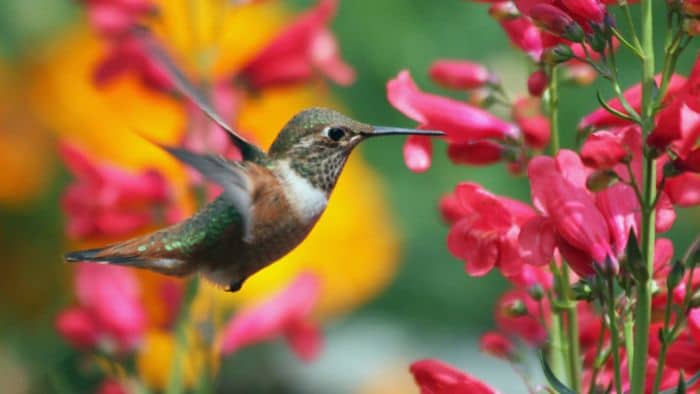
What Is The Right Shutter Speed For Hummingbird
Photographing hummingbirds involves high-speed photography. Since the shutter speeds of most DSLRs are typically somewhat constrained, stopping this kind of motion requires the use of a flash. Even with the most expensive DSLRs, your standard shutter speed is typically limited to 1/8000th of a second. This is simply not fast enough to freeze the hummingbird’s motion.
It is natural to think of high-speed shutters when it comes to fast-moving objects. This is because some hummingbird species’ wingspan is between three and four inches in length. They also beat about 50 to 60 times per second. This indicates that the wing tips move approximately 6 to 8 inches from front to rear. Therefore, a shutter speed of 1/1000 second will record approximately 1/2 inch of movement, translating to a complete blur of the wings.
Since they don’t move at a steady speed, the 1/2-inch distance isn’t always accurate. Instead, they travel for one beat, stop (or significantly slow down), and then reverse direction. Therefore, you would require a faster shutter speed in order to capture detail in the wings. Our advice would be to use flash to restrict the movement of hummingbirds since the shutter speed is insufficient. For this reason, knowing how to photograph hummingbirds with a flash will be beneficial.
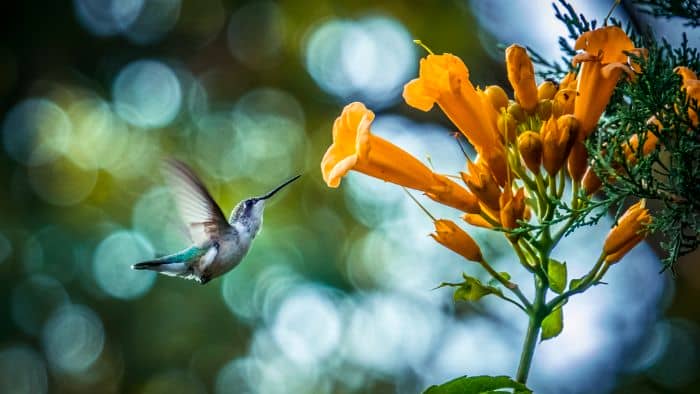
Conclusion
Now that you have a good idea of how to photograph hummingbirds with a flash, you can use the advice in this article to get the best shots. If your camera is capable of live view, use the 10 x setting. If your camera is properly set up, then you have a great chance to take pictures each time a bird visits your backyard feeder and flies off.
Remember to have a look at the picture as you go along so that you can change the exposure, framing, and focus as you see fit. The majority of birds will grow accustomed to the flash when it discharges as they can tolerate it. However, if there are ones that react anxiously to them, then adjust your shooting rate as necessary.
With almost any lens, you can get a good shot of a hummingbird by simply adjusting the distance between the camera and the subject. Remember that great hummingbird photos don’t always require large, pricey telephoto lenses. If you want to know how to make better hummingbird photos, here’s a great video.

